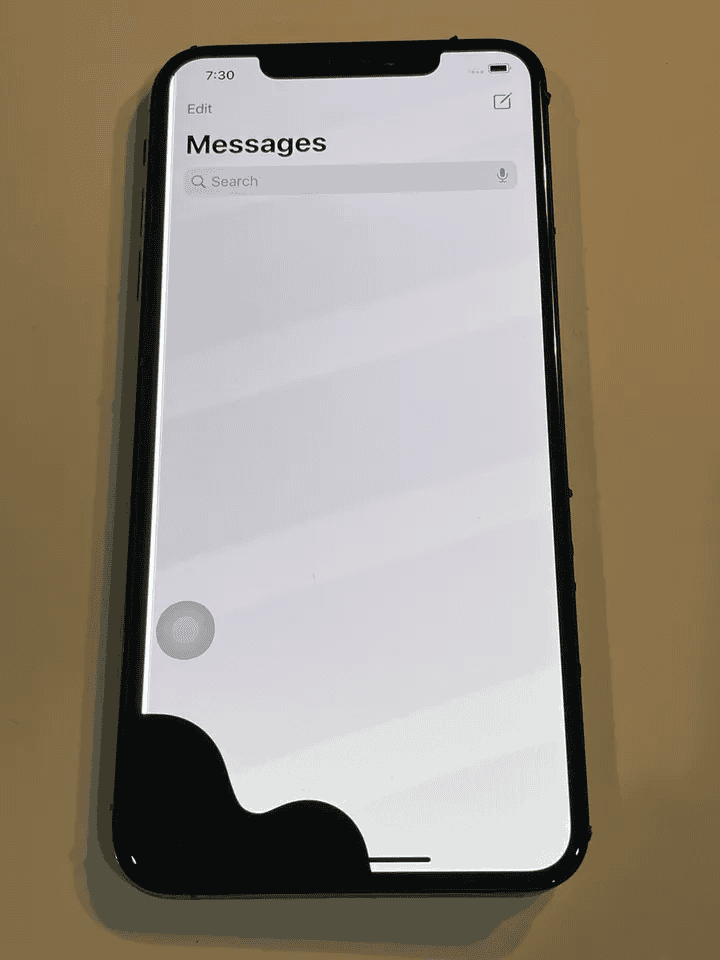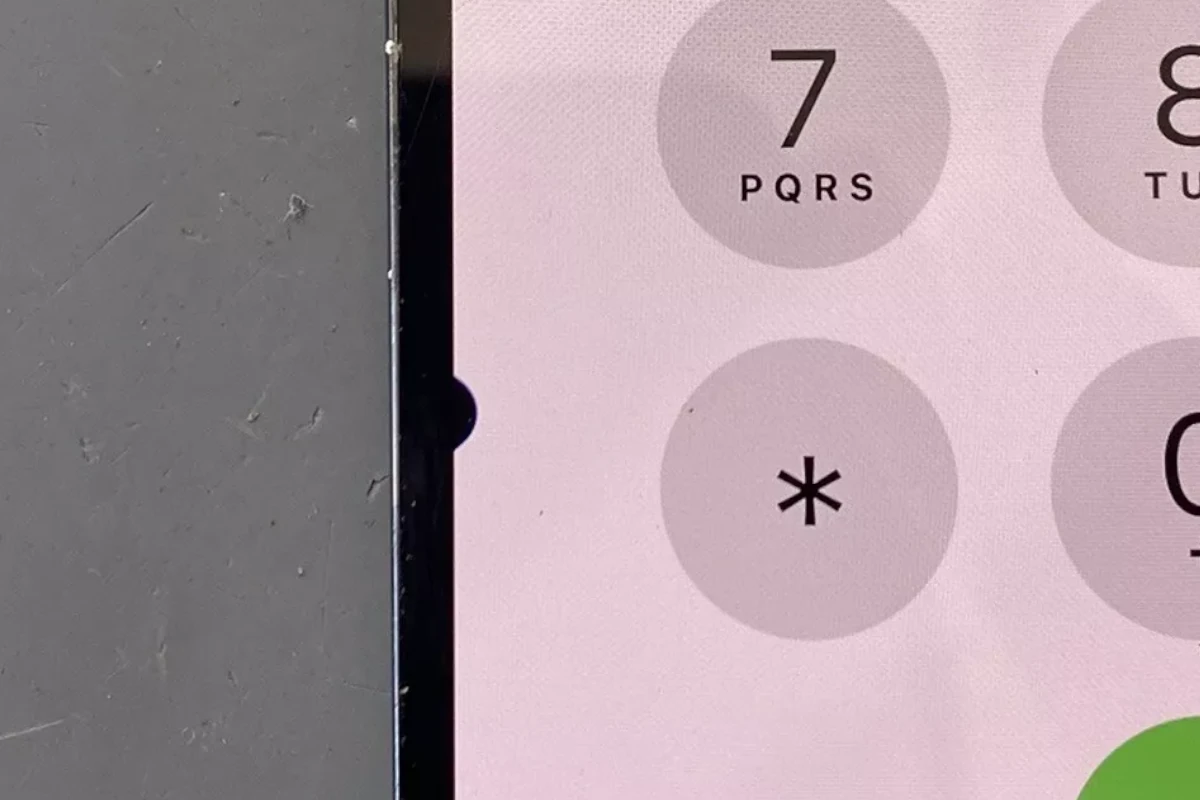Black spots on iPhone screens can be frustrating. These spots often appear due to hardware issues like dead pixels or physical damage. The most common causes are stuck pixels, screen damage, or liquid infiltration.
Fixing black spots depends on the underlying cause. Some solutions are simple and can be done at home. Others may require professional repair. Understanding the issue is key to choosing the right fix.
iPhone users should act quickly when they notice a black spot. Ignoring the problem can lead to further damage. In some cases, the spot may spread if left untreated.

Troubleshooting Black Spots on Your iPhone Screen
Why Black Spots Appear
That black spot on your iPhone screen is a telltale sign of trouble brewing beneath the surface. It’s usually a hardware issue, not a software glitch. The most common cause is physical damage to the LCD, the delicate layer that displays the images on your screen. A drop, a bump, or even excessive pressure can cause the LCD to malfunction, resulting in those dreaded black spots. Liquid damage can also be a factor, as moisture can seep into the display and wreak havoc on the sensitive components.
Beyond the Obvious: Less Common Causes
While physical and liquid damage are the usual suspects, there are less common culprits behind black spots. A phenomenon called “screen burn-in” can occur if a static image is displayed for an extended period, leaving a faint ghost image. This is more common with OLED screens. In rare cases, a manufacturing defect in the LCD can also cause black spots to appear, even on a brand-new device.

Software Solutions? Probably Not.
Before you panic, it’s worth trying a simple restart. A software glitch can sometimes cause display anomalies, and a restart might resolve the issue. If the black spot is very small, it might be a stuck pixel, which can sometimes be fixed with apps or websites that flash colors on the screen. However, these methods have mixed results.
The Hardware Reality: When DIY Won’t Cut It
Unfortunately, in most cases, a black spot indicates physical damage that can’t be fixed with software tricks or home remedies. Attempting to open the phone yourself can worsen the damage and even void your warranty. The LCD is a complex component, and professional repair is usually necessary.
Seeking Professional Help: The Best Course of Action
If the black spot persists after trying basic troubleshooting steps, it’s time to contact Apple Support or visit an authorized Apple service center. They have the expertise and tools to diagnose the problem accurately. They can advise you on the best repair or replacement options, which may involve replacing the entire screen or even the phone itself.
Prevention is Key: Protecting Your Screen
The best way to avoid black spots is to protect your iPhone screen from damage in the first place. Here are some tips:
- Use a screen protector: A tempered glass screen protector can absorb impact and prevent scratches.
- Invest in a durable case: A good case provides cushioning and protects against drops.
- Handle with care: Avoid dropping your phone or placing it under pressure.
- Keep it dry: Avoid exposing your phone to liquids.
Facing the Black Spot: A Quick Guide
| Problem | Possible Cause | Solution |
|---|---|---|
| Black spot on screen | Physical damage to LCD | Contact Apple Support or visit an authorized service center for repair. |
| Small black spot | Stuck pixel | Try a pixel-fixing app or website (results may vary). |
| Faint ghost image | Screen burn-in | Adjust display settings to prevent further burn-in; consider professional help. |
| Black spot on new phone | Manufacturing defect | Contact Apple Support for warranty replacement. |
Key Takeaways
- Black spots on iPhone screens are usually caused by hardware issues
- Quick action is important to prevent further damage
- Some fixes can be done at home while others need professional help
Diagnosing the Cause of Black Spots on iPhone Screens
Black spots on iPhone screens can stem from various sources. Proper diagnosis helps determine the right fix and prevent future issues.
Understanding Black Spots and Their Common Causes
Black spots on iPhone screens often result from hardware problems. Dead pixels fail to light up causing dark spots. Stuck pixels stay one color. Physical damage from drops or pressure can break screen components. Water damage may short-circuit parts of the display.
Software glitches can sometimes mimic black spots. These are rare but may occur after updates or app installs. Dirt or oils on the screen can look like black spots too. Clean your screen with a soft cloth to rule this out.
Differentiating Between Hardware and Software Issues
Hardware issues usually cause permanent spots. They don’t move or change. Software problems may create temporary spots that shift or disappear after a restart. To test tap the screen where the spot is. If it reacts it’s likely a software issue.
For hardware problems check if the spot is visible on a screenshot. If not it’s probably physical damage. Look closely at the spot. Dead pixels are tiny dots. Larger blotches might indicate more severe damage.
Preventive Measures and Protective Accessories
Use a good quality screen protector to guard against scratches and minor impacts. Cases with raised edges help protect the screen from drops. Avoid exposing your iPhone to extreme temperatures or moisture.
Be careful when cleaning your screen. Use only soft microfiber cloths. Don’t press too hard. Avoid liquid cleaners that could seep into the device. Regular gentle cleaning prevents buildup that can look like spots.
Keep your iPhone’s software up to date. This fixes bugs that might cause display issues. Don’t install apps from untrusted sources. They could contain malware that affects your screen.
Frequently Asked Questions
Black spots on iPhone screens can be caused by various factors. Solutions range from simple cleaning to professional repairs. Here are common questions about fixing this issue:
How can I remove a black spot on my iPhone screen after it was dropped?
A black spot from dropping your iPhone may be due to physical damage. Try a soft reset by holding the power button. If that doesn’t work, back up your data and take it to an Apple Store or authorized repair shop for inspection.
Is it possible to repair black spots on an iPhone screen that are spreading?
Spreading black spots often indicate liquid damage or a malfunctioning LCD. Turn off your iPhone right away to prevent further damage. Take it to a repair shop quickly as spreading spots can worsen over time.
What methods are available for fixing a dead spot on an iPhone screen?
Dead spots might be fixed by recalibrating the screen. Go to Settings > General > Reset > Reset All Settings. If that fails, a screen replacement may be needed. Contact Apple support for guidance.
Can screen bleed on an iPhone be repaired, and how would one do so?
Screen bleed is usually caused by physical pressure or manufacturing defects. Remove any case and gently massage the affected area. If the issue persists, a professional repair or screen replacement is often necessary.
What are the estimated costs to repair a black spot on an iPhone screen?
Repair costs vary based on the iPhone model and damage extent. Simple fixes might be free under warranty. Screen replacements can range from $129 to $329 for newer models. Always get an estimate from an authorized repair center.
Are there any DIY solutions for fixing black spots on an iPhone screen, or should it be professionally serviced?
For safety and warranty reasons, DIY fixes are not recommended. Cleaning the screen with a soft, lint-free cloth might help if the spot is just dirt. For all other cases, seek professional help to avoid further damage to your device.







